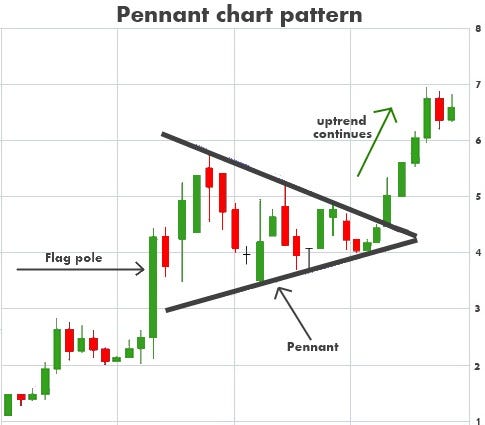Top 10 Tips For Assessing The Market Coverage Of Ai Stock Predicting/Analyzing Trading Platforms
When looking at AI trading platforms that predict/analyze the market, coverage of the stock is a crucial aspect to take into consideration. It determines what assets and markets are readily available. Market coverage is important as it lets you diversify, discover global markets and to adapt different trading strategies. Here are 10 top tips to help you evaluate the market coverage offered by these platforms.
1. Evaluate Supported Asset Classes
Stocks: Ensure that the platform has stocks from all major stock exchanges, which include NYSE, NASDAQ and LSE.
ETFs: Verify that the platform offers a variety of ETFs to provide diversified exposure across categories, themes and even regions.
Futures and options. Check that the platform is compatible with derivatives such options, futures, and leveraged instruments.
Forex and commodities: See whether your website offers commodities and forex, precious metals and energy commodities.
Cryptocurrencies Check whether the platform is compatible with popular copyright like Bitcoin, Ethereum, and altcoins.
2. Check geographic coverage
Global markets - Ensure that the platform is able to cover all major markets across the world, including North America (including copyright), Europe, Asia-Pacific markets and emerging ones.
Regional focus Verify that the platform is specialized in certain regions or markets which align with your trading interest.
Local exchanges: Verify whether your platform is compatible with local and regional exchanges that are relevant to you or your strategy.
3. Delayed Data vs. Delayed Data
Real-time Data: Be sure that the platform provides real-time data for trading and also for making quick decisions.
Delayed data: Check if delayed data is available at no cost or at a lower cost. This could be enough for long-term investors.
Data latency: See whether the platform reduces data latency, especially for high-frequency trading.
4. Review the availability of historical data
In depth of Historical Data The platform has a large amount of historical data to backtest as well as analysis and testing (e.g. 10plus years).
Granularity: Find out if the data contains intraday, daily weekly, monthly, and daily the granularity.
Corporate actions: Examine for evidence that data was reported in the past. Dividends, stock splits, and any other corporate actions should be included.
5. Check the Market Depth and Place an Order Books
Platforms must provide Level 2 data (order-book depth) to help improve price discovery and execution.
Find out if there is a real-time bidding system and spreads of asking. This will ensure that the price is correct.
Volume data: Make sure that the platform has detailed volume data in order to analyze market liquidity.
6. Examine the coverage of Indices and Sectors
Major indices: Make sure the platform covers major indices (e.g., S&P 500, NASDAQ 100, FTSE 100) for benchmarking purposes and index-based strategies.
Data for specific industries: If you want to do a targeted analysis, check if there are any data available for specific sectors.
Custom-made indexes. See if it is possible to create or track custom indices using your requirements.
7. Integrate Sentiment and News Data
News feeds - Ensure that the platform integrates real-time news feeds for market-moving news from trusted (e.g. Bloomberg or Reuters) sources.
Sentiment analysis Find out whether your platform supports sentiment analysis tools that use data from news, social media, sources, or another sources of data.
Event-driven Strategies: Check if the platform can support strategies that are triggered by certain events (e.g. economic reports or earnings announcements).
8. Check for Multimarket Trading Capabilities
Cross-market trading : Make sure your platform can handle trading across multiple markets, asset classes and exchanges through an interface that is single.
Conversion to currencies: Make sure the platform offers multi-currency and automatic conversion of currencies for international trading.
Time zone support: Find out if the trading platform is compatible with different timezones for global markets.
9. Check out alternative data sources
Alternative data: Determine if the platform integrates alternative sources of data (e.g. satellite imagery or internet traffic, credit card transactions) for unique insight.
ESG data: Verify whether the platform contains environmental social, governance, and (ESG) data for socially responsible investing.
Macroeconomic data: Ensure that the platform provides macroeconomic indicators (e.g. inflation, GDP, interest rates) to conduct a fundamental analysis.
Review Customer Feedback and Market Reputation
User reviews: Search for feedback from users to get a feel for the platform.
Find out the reputation of the platform in relation to its coverage or industry awards.
Case studies: Check for case studies, testimonials and other data that demonstrates the effectiveness of the platform on particular assets or markets.
Bonus Tips
Trial period: Test the platform for free to see how well it covers market trends and the types of data available.
API access: Check to see if the API of the platform allows custom analysis using market data.
Support for customers: Ensure whether the platform offers assistance for questions related to markets or data.
These guidelines will assist you assess the market coverage provided by AI trading platforms that predict/analyze stock prices. So, you'll be able select the one that offers the information and markets you need to be successful in trading. Market coverage that is comprehensive will allow you to diversify, investigate, and adapt your portfolio to changing market conditions. Take a look at the best best ai stock info for blog advice including best stock analysis app, free ai tool for stock market india, best ai stocks, ai trade, ai stock trading app, chart ai trading, ai chart analysis, ai trader, ai for copyright trading, ai for copyright trading and more.

Top 10 Tips For Evaluating Ai Stock Trading Platforms As Well As Their Educational Resources
Assessing the educational resources provided by AI-driven stock prediction and trading platforms is vital for users to understand how to make the most of the platform, analyze results, and make informed trading decision. Here are ten top tips for evaluating these resources.
1. Comprehensive Tutorials and Guidelines
TIP: Make sure the platform has tutorials that guide you through every step, or guides for advanced and beginners.
Why? Clear instructions can help users use the platform.
2. Webinars Videos, Webinars and Webinars
There are also live training sessions, webinars or videos of demonstrations.
Why? Interactive and visual content helps you understand complex concepts.
3. Glossary
Tips. Make sure your platform comes with a glossary that defines the most important AIand financial terms.
Why is this? It will assist users, particularly beginners to comprehend the terminology that are used in the application.
4. Case Studies and Real-World Examples
TIP: Check whether the platform has case studies, or real-world examples of how AI models can be applied.
Examples of practical use are used to demonstrate the effectiveness of the platform and allow users to relate to its applications.
5. Interactive Learning Tools
TIP: Look for interactive features such as quizzes and sandboxes.
Why is that interactive tools allow users to test and practice their skills without risking money.
6. Regularly Updated Content
Verify that the educational resources are frequently updated to reflect changes in market trends or regulations or new features, and/or modifications.
What is the reason? Old information could cause confusion about the platform or its improper usage.
7. Community Forums Help, Support and Assistance
Find active communities forums or support groups that enable users to share their thoughts and ideas.
The reason Expert advice and peer support can improve learning and solve problems.
8. Programs of Accreditation or Certificate
TIP: Make sure that the platform you are considering offers courses or certifications.
Why recognition of formal education increases credibility and inspire learners to expand their education.
9. Accessibility and user-friendliness
Tip: Assess how accessible and user-friendly the educational resources are.
The reason is that it's easy for users to learn at their own pace.
10. Feedback Mechanism for Education Content
Verify if the platform permits for users to leave comments on the material.
The reason: Feedback from users improves the quality and value.
Bonus tip: Use different learning formats
To cater to different preferences make sure the platform offers various learning options.
When you carefully evaluate these aspects, you can discover if you've got access to a variety of educational resources which will assist you in making the most of its potential. See the most popular sources tell me for ai bot for copyright trading for website advice including trader ai intal, ai for stock trading, ai stock trading, copyright ai bot, ai trading app, best ai stocks to buy, using ai to trade stocks, chart ai for trading, ai stocks to invest in, best stocks to buy now and more.

Comments on “30 Handy Pieces Of Advice For Picking AI Stock Trading Websites”